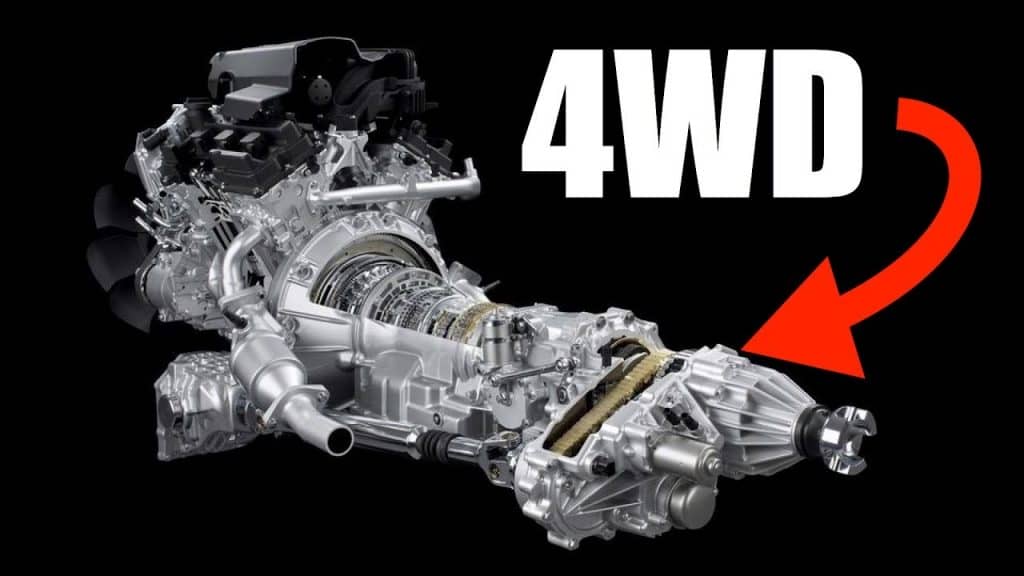Every day while enjoying some flashy car cutting its way into the magnificent oblivion in a TV commercial, we see some hard to understand car jargon appearing on the screen. While one can brush it away terming it only for the “car freaks”, it is always good to know what you are driving/going to drive and how its specifications will affect your driving style.
One of the “technical terms” we see most often is: type of wheel drive the car offers. It seems to cover pretty much all the alphabets; AWD, FWD, RWD, and sometimes even numbers appear beside these alphabets e.g. 4WD. So what in the name of hot silencers, this even is?
Automobiles of all types are meant to act differently on various surfaces, and this depends on the type of “Wheel Drive” they offer. We all know that all automobiles must have wheels, but how their drive is different from each other is quite interesting and useful, if you want to get the max out of your vehicle.
Front-Wheel Drive (FWD):
This most common drive system found in today’s vehicles is FWD (front-wheel drive). As the name implies, these vehicles channel their power to the front wheels. Front-wheel drive is often employed, because it is very compact system and uses very little space inside the cabin. The majority of the weight is located over the front wheels, thus allowing good road traction at all times, especially when it is slippery.
Economy is also a factor, as building a FWD car is a lot cheaper (lesser materials required). It is found in economy cars as it offers better fuel efficiency, since it has lower weight. It is also more responsive to steering movement as the final drive is directly connected to it. It has some problems, like being nose heavy, and fragile due to half shafts and CV joints and the problem of Torque steer, but these are usually negligible when compared with the advantages.
Rear-Wheel Drive (RWD):
Yes, again the name gives it away (why am I even writing then?) Rear-wheel drive vehicles transfer all of their power towards the vehicle’s rear wheels. Rear-wheel drives used to be very popular, until the advent of its nemesis FWD in the early 80s. However, RWD vehicles still have the advantage of providing more horsepower and higher vehicle weights. This is the reason why they are found abundantly in sports cars, trucks, race cars, law enforcement pursuit vehicles, and high-performance sedans.
It can take a lot of beating without significant damage as it has a solid shaft going across the body. Also, it offers great balance due to the better spread of weight over its body than its counterpart. But in snowy or damp conditions, RWD are best left at home as they offer poor traction and can slip easily.
Four-Wheel Drive (4WD or 4×4):
In 4×4 systems, power goes from the transmission to transfer case. This system then splits power between the front and rear axles, so that maximum torque is going to each wheel. Four-wheel vehicles are different from AWD in 4WD as it features a two-speed transfer case with both high and low ranges. Most 4WD vehicles usually operate in only RWD mode, until the four-wheel traction mode is turned on. But unlike AWD (as we will see below), all the systems are driver-activated. This means that nothing is automatic and the driver must engage the AWD function via a gear shift or button.
It is often found on large SUVs and trucks, because it provides optimal traction when off-road. You can use a 4WD at low speed in snow or mud, but enjoy its two-wheel drive in normal conditions. This means that there are fewer moving parts when in 2WD, and therefore lesser hindrance to forward motion. This will save you a lot of fuel without the need to engage 4WD.
4WD ‘low’ splits the power evenly among all 4 wheels, while a 4WD ‘high’ splits power but unevenly and allows ‘limited slip’ between the inside and outside wheels. This allows the car to move over an obstacle that offers lesser traction to one wheel than the other, like a puddle. Typically, high 4WD is recommended only up to around 60 mph.
In summary:
4WD pros include best traction in off-road conditions, fuel economy, and rugged, low-maintenance technology.
Some of its cons include added weight and complexity to the drive train, it still can’t be used in all conditions (part time 4WD on pavements), and it is certainly more expensive than two-wheel drive models.
Here’s a video explaining 4WD.
All-Wheel Drive (AWD):
All-wheel drive is often taken for four-wheel drive cars, but despite the fact that both use all four wheels, there are some differences between the two.
Generally, a AWD system operates as a RWD or FWD vehicle– most are FWD. Unlike 4WD, AWD drive is beautiful in its simplicity: the system does everything automatically, without driver intervention.
In AWD, this system works to get power to the wheels with the most traction by splitting power between the front and rear axles on the center differential.
Summary:
AWD Advantages: It provides increased grip and control under all road conditions, gives more responsive handling and traction, and is meant to work all the time.
Disadvantages are that it doesn’t offer a good fuel economy as 4WD. It increases the weight and complexity of vehicles and is not as good in extreme off-road conditions as a 4WD.
All wheel drive system are collectively explained in the video below:
So if you are going to have a lot of off-road trips, 4WD might be a good option. But if you live in a snowy area, an AWD would be a better option, as it is less fussy for the driver to operate.
Liked our article?
Have anything else to add?
Comment below!

